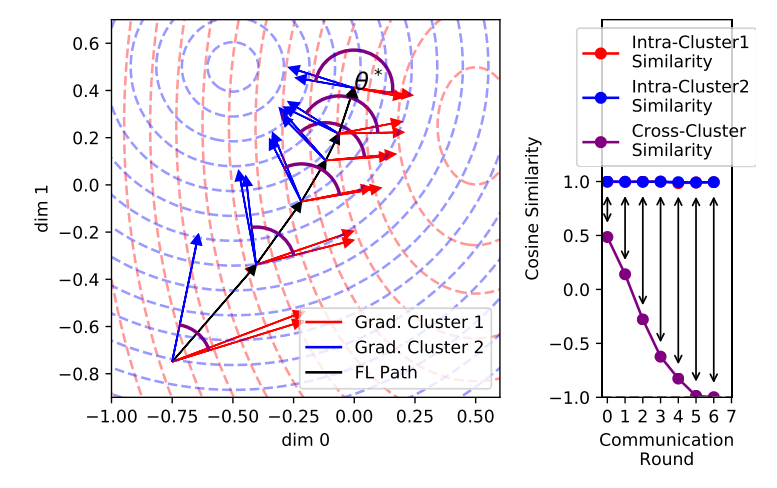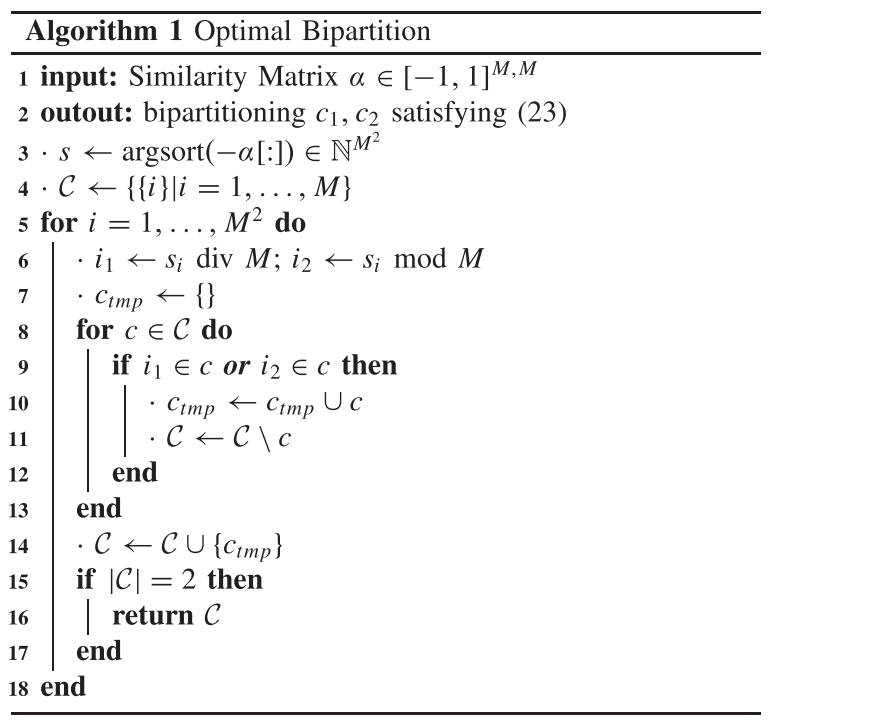论文笔记(1)—"Clustered federated learning: Model-Agnostic distributed multi-Task optimization under privacy constraints"
Motivation
In this paper[1], authors presented a novel group based federated learning to solve incongruent data problem. In traditional FL methods, like FedAvg, assumes all clients' data coming from the same distribution. In fact, this assumption often fails.
Facing with incongruent data, clients won't get their optimal solutions though the system loss has been minimized. Autonomy is the most important characteristic of FL and it means clients will withdrawal from FL system if they haven't profit from it. The objective function seems not friendly for clients.
A simple way is to find solutions in each cluster. But, how segment the population? what is the segmentation criteria and where is the stopping point? Answers of above questions are presented in this paper [1]
Method
Notations
Key Ideas
similarity measurement
In this paper, authors used gradient consin similarity to segment population. Simply speaking, different clusters' gradient direction should have significant divergences and they used the consin similarity to segment.
Concretely, they used bipartitioning to divide whole clients set into two clusters. Detailed bipartitioning algorithm is following:
Personal Questions
My personal questions of their work are following:
- Despite of their intuition ideas, their basic assumption may fail in some scenarios. If all clusters' distribution have the same mean value and the shape of these distribution is like annulus, the gradient for binary classification problem is
- To compute the consin similarity, we should carefully choose which parts of network gradients can measure the similarity of clusters. For a complex network, concatenate all gradients in the network seems inappropriate, as they did in this work.






【推荐】国内首个AI IDE,深度理解中文开发场景,立即下载体验Trae
【推荐】编程新体验,更懂你的AI,立即体验豆包MarsCode编程助手
【推荐】抖音旗下AI助手豆包,你的智能百科全书,全免费不限次数
【推荐】轻量又高性能的 SSH 工具 IShell:AI 加持,快人一步
· 从 HTTP 原因短语缺失研究 HTTP/2 和 HTTP/3 的设计差异
· AI与.NET技术实操系列:向量存储与相似性搜索在 .NET 中的实现
· 基于Microsoft.Extensions.AI核心库实现RAG应用
· Linux系列:如何用heaptrack跟踪.NET程序的非托管内存泄露
· 开发者必知的日志记录最佳实践
· TypeScript + Deepseek 打造卜卦网站:技术与玄学的结合
· Manus的开源复刻OpenManus初探
· AI 智能体引爆开源社区「GitHub 热点速览」
· C#/.NET/.NET Core技术前沿周刊 | 第 29 期(2025年3.1-3.9)
· 从HTTP原因短语缺失研究HTTP/2和HTTP/3的设计差异